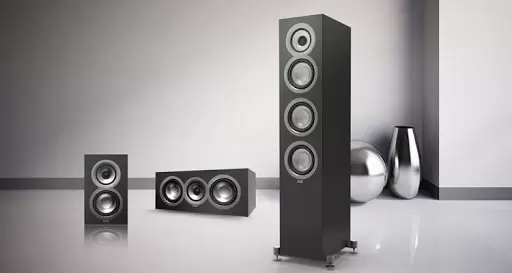Understanding Speaker Sensitivity and Its Importance in Audio Performance
Speaker sensitivity refers to how effectively a speaker converts power into sound output. It is measured in decibels (dB) and indicates the volume level produced by a speaker with a given amount of power. Sensitivity is a crucial specification to consider when selecting speakers for your audio system, as it directly impacts the sound output and overall performance.
The Role of Sensitivity in Speaker Efficiency and Sound Output
Speaker sensitivity is closely linked to efficiency, which refers to how effectively a speaker converts electrical power into acoustic energy. Higher sensitivity ratings indicate greater efficiency, Speaker specifications meaning that speakers with higher sensitivity can produce higher volume levels with less power input. This efficiency is particularly important for applications where high sound output is desired, such as home theaters, live performances, or outdoor events.
How Speaker Sensitivity Impacts Sound Quality and Volume Levels
The sensitivity rating of a speaker has a direct impact on both sound quality and volume levels. Speakers with higher sensitivity require less power to achieve the same volume as speakers with lower sensitivity. This allows high-sensitivity speakers to deliver dynamic, detailed sound even at lower power levels. On the other hand, speakers with lower sensitivity may require more power to produce the same volume, which can result in potential distortion or strain on the amplifier.
Decoding Sensitivity Ratings: What Do the Numbers Mean?
Speaker sensitivity is typically measured in decibels (dB) and represented by a rating given at a specific distance (often 1 meter) with 1 watt of power input. Higher sensitivity ratings, such as 90 dB or above, indicate greater efficiency and better sound output with less power. Conversely, lower sensitivity ratings, such as 85 dB or below, suggest lower efficiency and may require more power to achieve the desired volume levels.
High Sensitivity Speakers: Unleashing Powerful Sound with Less Power
High sensitivity speakers are known for their ability to produce powerful sound even with lower power input. They are well-suited for applications that require high sound output or for amplifiers with lower power ratings. High sensitivity speakers can deliver dynamic and impactful audio experiences, making them popular choices for home theater setups, live performances, and other situations where volume and clarity are essential.
Low Sensitivity Speakers: Amplifier Requirements and Potential Limitations
Low sensitivity speakers, although less common, have their own applications and considerations. They may require more power from the amplifier to achieve the desired volume levels and may be suitable for setups where higher power amplification is available. It’s important to carefully match low sensitivity speakers with compatible amplifiers to avoid underpowering or straining the system.
Finding the Right Sensitivity Level for Your Audio System
When selecting speakers, it’s important to consider the sensitivity level that best suits your audio system and listening preferences. If you have a low-powered amplifier or prefer listening at lower volume levels, speakers with higher sensitivity ratings can provide efficient performance. For higher-powered systems or situations where higher volume levels are desired, speakers with lower sensitivity may be suitable. Consider the overall system requirements and balance sensitivity with other factors such as room size, intended use, and personal listening preferences.
Matching Speaker Sensitivity to Amplifier Power for Optimal Performance
To ensure optimal performance, it is crucial to match the sensitivity of your speakers with the power capabilities of your amplifier. Ideally, the amplifier should be able to provide enough power to drive the speakers to the desired volume levels without straining or distorting the sound.
Sensitivity vs. Power: Understanding the Relationship
The sensitivity rating of a speaker is a crucial factor in determining how efficiently it converts electrical power into sound. It is typically measured in decibels (dB) and represents the sound level produced by the speaker when given a specific amount of power input. Sensitivity plays a significant role in sound output, as it determines the volume levels that can be achieved with a given amplifier power.
Sensitivity and Amplifier Requirements
Speaker sensitivity is directly linked to the power requirements of an amplifier. Higher sensitivity speakers can produce higher sound levels with less power, making them well-suited for pairing with low-powered amplifiers. Conversely, speakers with lower sensitivity require more power to reach the same volume levels, which may necessitate a more robust amplifier. Matching the sensitivity of speakers to the power output of the amplifier ensures optimal performance and prevents underpowering or overdriving the speakers.
Sensitivity and Sound Quality
While sensitivity primarily influences volume levels, it can indirectly affect sound quality as well. High-sensitivity speakers tend to be more responsive, delivering greater dynamic range and detail in the audio. They can reproduce softer sounds with greater clarity and offer better transient response. However, it’s important to note that sensitivity alone does not determine sound quality, as other factors like driver design, enclosure, and crossover implementation also play significant roles.
Practical Considerations when Evaluating Sensitivity
When evaluating speaker sensitivity, it’s crucial to consider the specific requirements of your audio setup and listening environment. For applications where high sound output is desired, such as home theaters or live events, speakers with higher sensitivity are preferred. They can provide impactful sound with less amplifier power, reducing the risk of distortion. In contrast, situations where lower volumes are sufficient may allow for the use of lower sensitivity speakers, potentially saving on amplifier costs.
Sensitivity and Efficiency in Different Speaker Designs
Sensitivity can vary among different speaker designs, such as bookshelf speakers, floor-standing speakers, and in-wall or in-ceiling speakers. Floor-standing speakers tend to have higher sensitivity due to their larger size and multiple drivers, making them suitable for larger rooms or situations where higher sound levels are required. On the other hand, bookshelf speakers may have lower sensitivity but offer better placement flexibility and can still deliver excellent sound quality in smaller spaces.
Sensitivity and the Listener’s Preferences
The choice of speaker sensitivity also depends on the listener’s preferences and listening habits. Some individuals prefer listening at lower volumes and value accuracy and detail in sound reproduction, while others enjoy higher volume levels with a more dynamic sound. By considering personal preferences and the listening environment, it’s possible to select speakers with an appropriate sensitivity level that aligns with desired sound characteristics.

